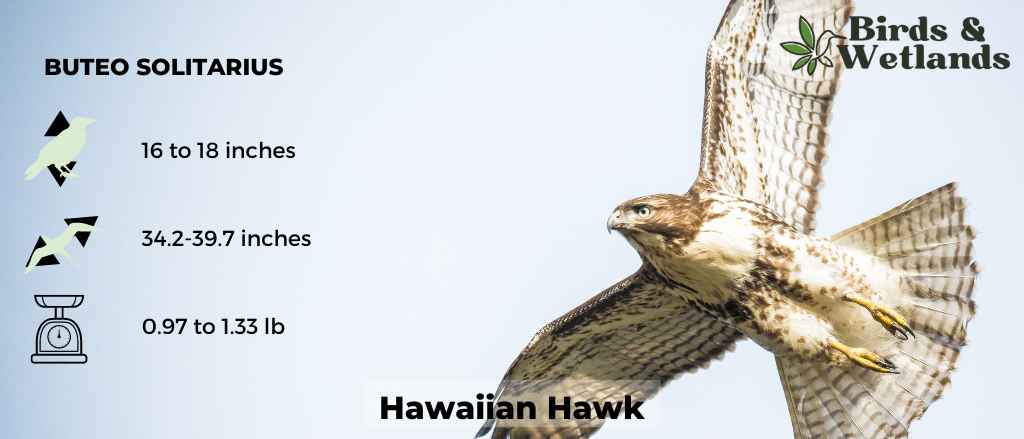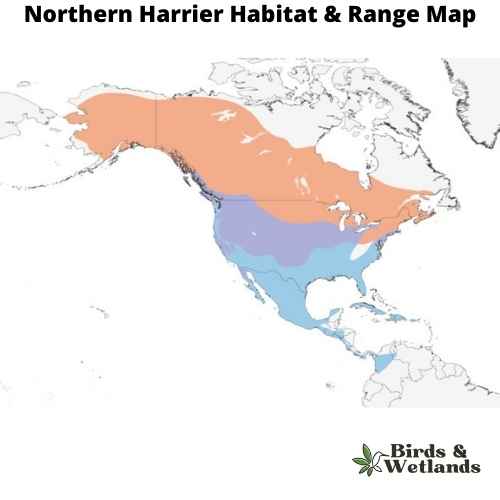Dive into the exciting world of hawks in Hawaii, and prepare for a thrilling journey into the lives of these sky-bound predators. The state of Hawaii consists of several islands, and the native hawk species are limited in number. The most notable hawk species in Hawaii is the ‘Io (Hawaiian Hawk).
Hawaii, with its pristine landscapes and unique biodiversity, serves as home to a variety of remarkable birds, including hawks. These majestic creatures embody the wild spirit of the islands, soaring high over verdant mountains, azure seas, and sprawling beaches. Known for their predatory skills, exceptional agility, and striking features, hawks in Hawaiian island add a touch of grandeur to the state’s vibrant ecosystem.
List of Hawks in Hawaii
Hawaii’s unique ecosystem hosts a variety of bird species, but the list of hawks is relatively small compared to other places, largely due to the state’s isolation. The abundance of hawks is also influenced by these unique conditions.
Hawaiian Hawk or ‘Io
The ‘Io, or Hawaiian Hawk, is a unique raptor and the only native member of the hawk family remaining in the Hawaiian archipelago and is more abundant than the Northern Harrier. Its population is concentrated primarily on the Big Island. This beautiful bird is recognized for its agility in flight and is known to locals as a symbol of royalty. The ‘Io much like their Hawaiian name: “eeeh-oh.” can be seen in various environments across the Big Island, ranging from the volcanic parks to the lush rainforest areas from March- September during their nesting season. A great spot to observe these opportunistic predators would be the Hawai’i Volcanoes National Park.
Northern Harrier
The Northern Harrier, although not as common as the ‘Io, can also be found in Hawaii. This bird is known to fly low over the ground when hunting and is distinguished by its owl-like facial disk, long tail, and slender wings. They are most commonly seen in open grasslands or marshes. In Hawaii, Northern Harriers have been spotted in locations like the James Campbell National Wildlife Refuge, located on Oahu’s North Shore.
Hawaiian Hawk (Buteo solitarius)

The Hawaiian Hawk is a small, short-winged bird of prey that is endemic to the Hawaiian Islands. It is one of two species in the Buteo solitarius complex, along with the Solitary Island Hawk.
- Scientific Name: Buteo solitarius
- Length: 40 to 46 centimetres (16 to 18 in)
- Wingspan: 87-101 cm (34.2-39.7 in)
- Weight: Male: 441 g (15.6 oz)/ Female: 605 g (21.3 oz)
Hawaiian Hawk Description
The Hawaiian hawk is a medium-sized bird of prey that is native to the Hawaiian Islands. It has a brown back and white chest, belly, and thighs. The head is covered with white feathers, as are its wings. The tail feathers have black tips. The eyes are yellow and the beak is black. It has a short tail, broad wings that allow it to fly at high altitudes, and large legs for perching on rocks or trees.
Hawaiian Hawk Sound
Hawaiian Hawk Habitat & Range
The Hawaiian hawk inhabits a variety of habitats in Hawaii, including rainforests, grasslands, shrublands, and even agricultural fields. They are found exclusively on the islands of Maui and Kauai.

Hawaiian Hawk Diet
They eat small birds, insects and rodents, which they catch by swooping down on them from above.
Hawaiian Hawk Nesting
Hawaiian hawks nest in tree cavities or old woodpecker holes during their breeding season from December until June or July. They lay two to three eggs that hatch after an incubation period of 28 days. One parent will stay at the nest while the other hunts for food for both parents and babies until they leave the nest at about six weeks old to form flocks with other hawks of their age group.
Northern Harrier (Circus hudsonius)


Listen:
The Northern Harrier is a medium-sized, slender hawk.
Adult birds are gray above, with pale bars on the wing feathers and white markings on the underwings and a white rump patch. The breast is barred with black and white, and the belly is streaked with brown.
They prefer open areas, such as grasslands and marshes, but can be found in almost any open habitat except dense woods.
Northern Harriers are opportunistic hunters that feed on small mammals such as mice, voles and rabbits as well as birds including quail, grouse and ducks. They hunt by flying low over open spaces such as fields or marshes.
Northern harrier nests on the ground in lowlands or hillsides near water bodies. It lays two to four eggs which hatch after 24 days of incubation by both parents. The chicks fledge after 30 days of hatching and remain dependent on their parents for another three weeks during which they learn how to fly.
Where to Spot Hawks in Hawaii
Hawaiian Rainforests
The lush rainforests of Hawaii, with their dense vegetation and abundant prey, provide an ideal habitat for the ‘Io. These diverse ecosystems, characterized by native plants like ‘ōhi’a lehua trees, support the ‘Io population and offer excellent opportunities for observing and studying these endemic hawks.
Volcanic Regions
The volcanic regions of Hawaii, such as Hawai’i Volcanoes National Park, showcase the dynamic nature of the islands. The ‘Io can often be found in these areas, taking advantage of the open spaces and perching on volcanic rock formations. These unique landscapes offer a dramatic backdrop for hawk-watching and provide insights into the adaptation of the ‘Io to their volcanic environment.
The ‘Io, with its distinct vocalizations and striking appearance, holds cultural significance in Hawaii and is considered an important part of the state’s natural heritage. Observing these magnificent birds in their natural habitats allows for a deeper connection to the unique ecosystems and conservation efforts of Hawaii.
FAQs About Hawks in Hawaii
How can I help protect native birds from hawk attacks in Hawaii?
While hawks are not native to Hawaii, it is still important to protect native birds from various threats. To help protect native birds, you can create bird-friendly habitats by planting native plants, reducing or eliminating pesticide use, and preventing the introduction of invasive species. Protecting the native forest habitat and supporting conservation organizations such as the Hawaiin fish and wildlife service, and participating in community efforts to restore and protect their habitats can make a positive impact.
Can I see hawks in captivity or rehabilitation centers in Hawaii?
Yes, some wildlife rehabilitation centers and aviaries in Hawaii may house hawks or other birds of prey. These facilities often work to rehabilitate injured or orphaned birds and provide education and conservation programs. It’s important to check with specific centers in Hawaii to determine if they have hawks on display and if visitation is allowed. You can also see the Hawaiian short eared owl and other endangered species there.
Are there any specific times or seasons when it’s best to spot the ‘Io in Hawaii?
The ‘Io can be observed throughout the year in Hawaii, but certain times and seasons may offer better opportunities for sightings. During the breeding season, which typically occurs from February to July, the ‘Io may be more active and visible as they engage in courtship displays and nesting activities. Early morning and late afternoon tend to be the best times for hawk-watching, as the ‘Io are often more active during these times of the day.
How important is the ‘Io, or Hawaiian Hawk, in Hawaiian culture?
The ‘Io holds great cultural significance in Hawaii. It is considered an ‘aumakua, a family guardian spirit, by some native Hawaiians. The ‘Io is associated with royalty in Hawaiian legend and is believed to possess keen spiritual vision. In ancient traditional Hawaiian culture, the ‘Io’s appearance or call was seen as an omen, and its feathers were used in ceremonial attire. The ‘Io continues to be deeply respected and cherished as a cultural symbol.


